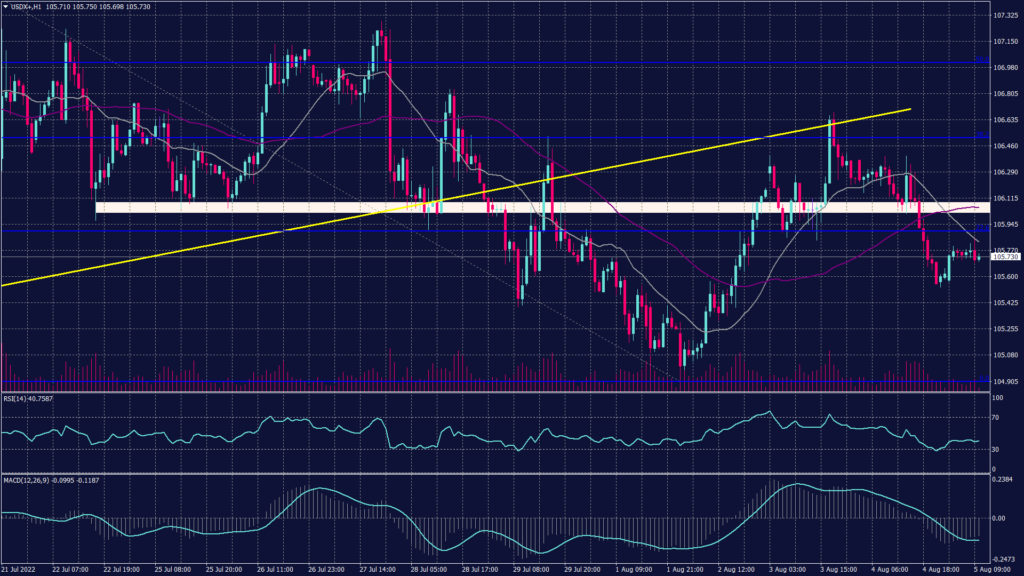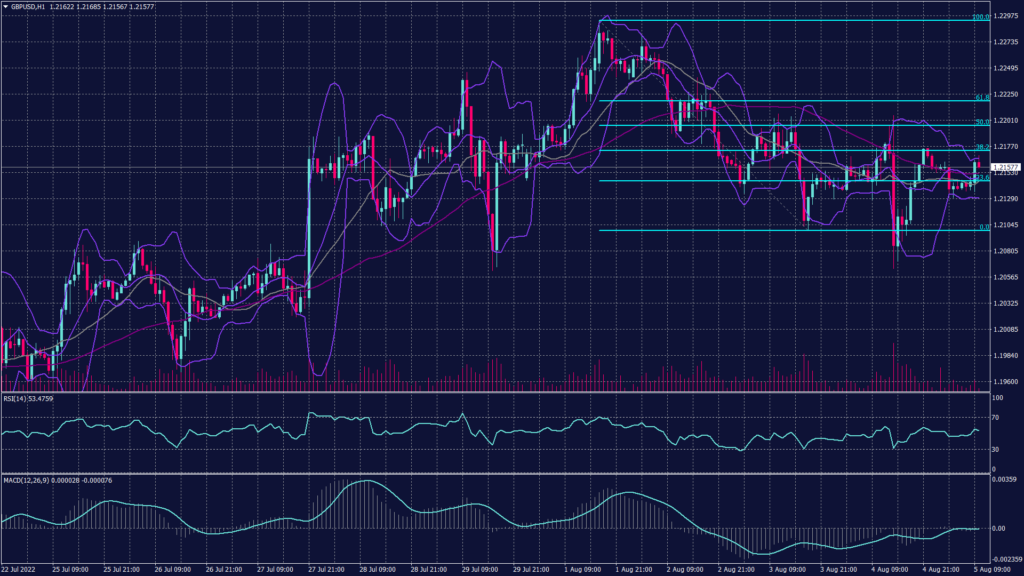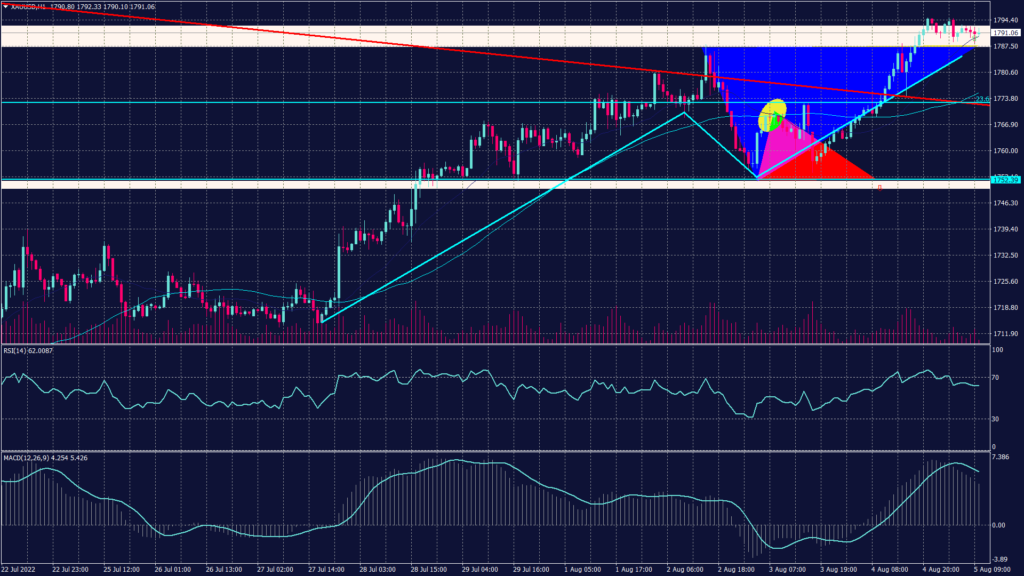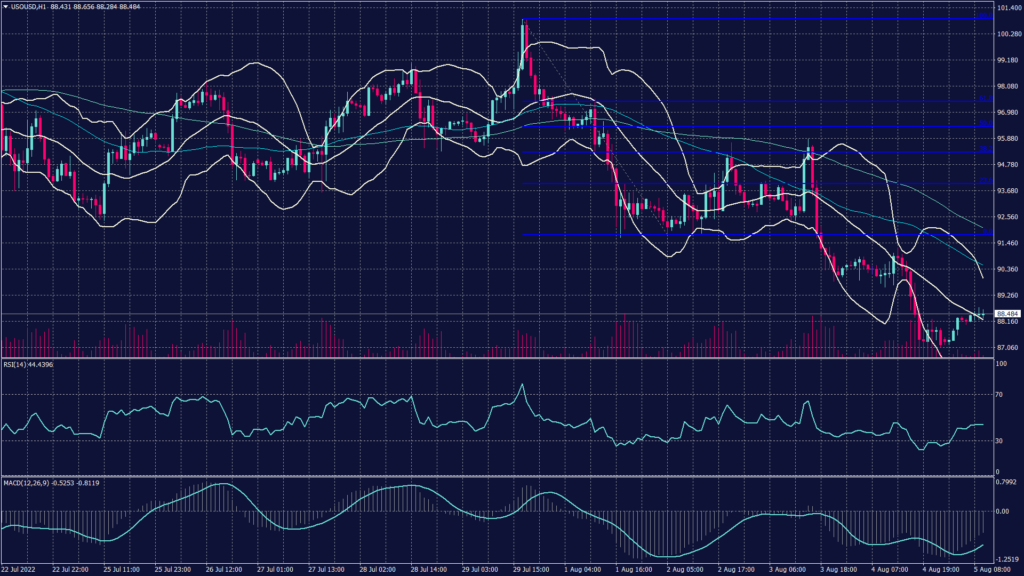05 August 2022 – Same Volatility as Any Non-Farm Payroll Day
U.S. Dollar Index (USDX)

The dollar inched higher on Friday but struggled to recoup its losses after falling by its sharpest pace in two weeks, as investors remained on tenterhooks ahead of U.S. jobs data and amid growing worries about a recession. The U.S. dollar index was up 0.15% to 105.86, after sliding 0.68% overnight to record the largest fall since July 19.
Investors await the key U.S. nonfarm payrolls report due today which will provide hints of how the U.S. economy is faring. Economists expect an increase of 250,000 jobs for the month of July, after 372,000 were added in June. However, signs of softening in the labour market could already be underway, as overnight data showed that the number of Americans filing new claims for unemployment benefits increased last week.
Technically:
The daily chart shows a high possibility of continuation towards the strong support at 103.55, which will raise two scenarios. In the first scenario, if the index bounced from 103.55 it will most likely continue the main trend upwards. In the other scenario, if the index broke below the previous bottom at 103.55 it will be confirming the change of direction.
The hourly chart remains negative for the time being as it is moving below the trend line since July 28 despite bulls tries to break back above that line. Meanwhile, technical indicators show mixed signals as RSI shows fluctuations between 104.60 and 105.40 while MACD shows a continuation to the downside.
PIVOT POINT: 105.75
| SUPPORT | RESISTANCE |
| 105.55 | 106.20 |
| 105.10 | 106.50 |
| 104.90 | 107.10 |
Sterling Pound (GBPUSD)

Signs of an economic slowdown capped price recovery. Recession worries have intensified following the Bank of England’s warning of a drawn-out downturn after it raised interest rates by the most since 1995. The Bank of England raised borrowing costs by 50 basis points on Thursday, to 1.75%, its highest level since late 2008, as it attempts to subdue inflation soared at a 40-year high. The bank also warned about a long recession ahead in Britain.
GBPUSD fell 0.1% to 1.2143, after house prices in Britain fell for the first time in more than a year in July when they edged down by 0.1% from June, figures from mortgage lender Halifax showed on Friday, as rising interest rates and soaring inflation finally took their toll.
Technically:
The hourly chart shows a horizontal movement above the support 1.2140 but remains negative over all as long as it is trading below 1.2185. Fibonacci retracement shows a strong support at 1.2110 and resistance at 1.2180.
The daily chart shows a continuation to the downtrend towards 1.1760 from the resistance at 1.2250 down.
PIVOT POINT: 1.2160
| SUPPORT | RESISTANCE |
| 1.2185 | 1.2130 |
| 1.2210 | 1.2100 |
| 1.2240 | 1.2065 |
Spot Gold (XAUUSD)

Gold prices extended gains on Friday and were set to end the week higher amid growing jitters over slowing global growth, while losses in the dollar ahead of U.S. nonfarm payrolls data also helped metals.
Spot gold was up slightly at 1,792 an ounce, after rallying 1.6% in the prior session. Gold futures were up 0.1% at $1,808.30. Meanwhile, both price indicators were set to end the week up 1.5%, as a growing number of dismal economic indicators from across the globe deepened concerns over a coming recession.
Spot gold hit the resistance at 1,793 yesterday breaking outside the declining channel but remains in the downtrend on the daily chart. Meanwhile, the hourly chart shows a possibility to curve and decline towards 1,785 an ounce.
PIVOT POINT: 1,790
| SUPPORT | RESISTANCE |
| 1,785 | 1,793 |
| 1,776 | 1,800 |
| 1,767 | 1,810 |
West Texas Crude (USOUSD)

Oil prices steadied in Asia trade on Friday, after hitting their lowest levels since before Russia’s February invasion of Ukraine in the previous session, as the market juggled concerns of supply shortage and slower demand. Brent crude rose 0.1% to $94.25 a barrel, while U.S. West Texas Intermediate crude was up 0.3% at $88.81 a barrel. Oil prices have come under pressure this week as the market fretted over the impact of inflation on economic growth and demand, though signs of tight supply kept a floor under prices.
For September, OPEC+ is set to raise its oil output goal by 100,000 barrels per day. The hike is one of the smallest since OPEC quotas were introduced in 1982, OPEC data shows. The global crude oil markets remained firmly in backwardation, where prompt prices are higher than those in future months, indicating tight supplies.
Both benchmarks fell to their weakest levels since February in the previous session after U.S. data showed crude and gasoline stockpiles unexpectedly surged last week and as OPEC+ agreed to raise its oil output target by 100,000 barrels per day (bpd), equal to about 0.1% of global oil demand.
WTI fell below the support at $88 per barrel to free fall below $90 a barrel. The chart shows tendency for further decline.
PIVOT POINT: 88.5
| SUPPORT | RESISTANCE |
| 88.00 | 89.40 |
| 87.00 | 91.10 |
| 85.00 | 92.10 |







